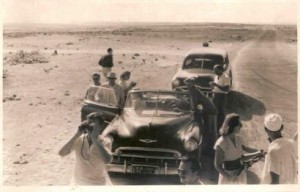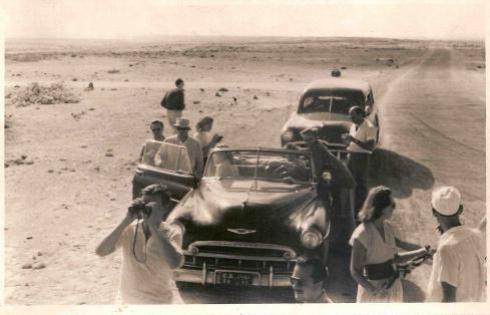
In 1952, just a few months before a coup toppled Egypt’s monarchy, members of the country’s royal family made a home movie called “Oil and Sand” — about a king being overthrown.
The reels were forgotten for some 60 years before being found and used in a nostalgic documentary entitled “In Search of Oil and Sand,” the story of the making of the film, which premiered this week at the Abu Dhabi Film Festival.
The English-language production, co-directed by Wael Omar and Philippe Dib, follows Mahmud Sabit, whose father was a cousin of king Farouk, as he opens old boxes at the family’s Cairo home to find the reels of film.
A historian by profession, Sabit narrates the documentary that also uses material from the diary of his American mother, Frances Ramsden, who had a stint as an actress in Hollywood and who also has a role in the film.
Shot in black and white, “Oil and Sand” was filmed with a 16mm camera by Bulent Rauf, the husband of princess Fayza, the king’s sister.
He began filming shortly after the so-called Black Saturday Cairo riots and arson on January 26, 1952, which for some, signalled the beginning of the end of Egypt’s monarchy.
“The film is an elaborate home movie. It was a period with a lot of stress, (and) curfew… They were looking for something to do,” said Sabit after the documentary’s festival premiere.
In Hollywood style, members of the then Egyptian aristocracy and their friends played roles in the film telling the story of a king trying to regain his throne after being toppled in a coup d’etat.
A British diplomat in Cairo played the role of an official of his country which supported the ousted king, while an American counterpart appeared as a US diplomat backing the coup.
The film is a glimpse into history, said Sabit, pointing out that king Farouk was backed by Britain, while the Free Officers Movement that ousted him, he believes, was US-backed.
The coup was “supported by the United States, which feared that communists might topple the king,” he said.
In researching his story, Sabit went looking for actors from the original film who were still alive, and in a worn-out villa in Alexandria found princess Nevine Abbas Halim, who played the role of a young woman kidnapped by bedouins.
He also takes the audience to where the movie was shot, in a villa near the pyramids of Saqqara, where dozens of bedouins served as extras.
Sabit tried without success to return to the palace of princess Fayza, now part of a state school in Cairo.
The final scene of the movie was shot in the palace ballroom, reflecting the lifestyle of a carefree aristocracy until the last moment.
Studio Misr at the time made a coloured version of the film, dubbed with dialogue, and intended to offer it to princess Fayza, but destroyed the print after the monarchy was overthrown.
The documentary ends with images found by Sabit of members of the royal family taking a night boat trip out of Alexandria on July 22, 1952.
Upon their return to shore at dawn, they found that army officers, including future President Gamal Abdel Nasser, had toppled king Farouk who was shortly afterwards sent into exile along with his family.




